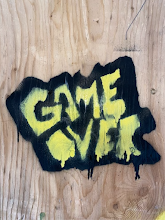This posting, as well as the next one, are the transcripts from a panel discussion I participated in as part of the Hybrid Book Conference in Philadelphia PA on June 6th, also participating were: Marlene MacCallum, David Morrish, William Snyder, Andrew Sallee and Tate Shaw. Michelle Wilson moderated the panel.
PART I (inter/section)
My first computing experience was in a programming course at university, the language was Fortran and we used cards with holes in them to communicate with computers. The cards needed to be kept in order by “binding” them with a paper tape similar to that used to bundle money. The “bound” stacks of cards were called: “books”. This intersecting experience informs my exploration of ways of knowing and making.
Intersection relies on a specific type of contact between various surfaces of knowledge and practice. In Gilles Deleuze’s conception, these surfaces are like membranes that are in constant flux and offer multiple points of contact with all the surfaces in their proximity. It is much like string theory in physics. The passive product of these intersections could be called, the hybrid.
Add to this, the notion of expansion/extension. These intersections inevitably result in a transfer of knowledge, essence, matter (whatever one may wish to call it) from one plateau to the other; thereby expanding/extending each. It is reasonable to assume that any creative action that brings together elements from varied sources will present an accumulation of data that can be implicit or explicit depending on the practitioner’s intent. My experience in the sillis research group has been to see how intersecting media serve to inform process much more actively than it does product. This brings me to question the very nature of intersection in terms of the hybrid object.
A hybrid form assumes that there can be a monadic form; a form that is purely independent and without reference or contact with other structures. The very nature of a cultural object and in this case, the artists’ book, makes this impossible, as it is conceptually hybrid.
For example:
- FORM 1: The book immediately connotes a viewing experience that happens over time.
- FORM 2: It is explicitly connected to the idea of “binding”, binding requires more than a single perceived unit.
- FORM 3: Whether explicitly or implicitly, the book suggests ‘reading’, an activity that moves beyond phenomenological experience. These three simple concepts already suggest that the book is hybrid by definition.
The work behind me is a book (this refers to the statico-dynamic image, seen above, projected during the talk. It is a sequence of elements placed within a specific viewing context, exists intimately with the viewer even in a public space such as this one. The photographs used (there is no actual video footage here) are used as if they were text, in a specific and intuitive grammatical organisation. Repetition and difference is their ontological compass. Duration, rather than time, is their medium as time is independent of our existence while we mark duration using chronometers.
There is an interesting connection of the hybrid (as defined) and the virtual found in Henri Bergson’s concept of différence. In the philosophy of difference, change (evolution) is guided by l’élan vital (vital impetus) where forward momentum happens with conscious activity; Deleuze’s reading of Bergson includes the sub-conscious. The virtual comes to represent potential through action while the hybrid represents possibility because of its more passive role in change.
In the second part of my talk, I will look more closely at hybridity defined through the conceptual framework of virtuality; at the intersection of digital and analogue processes.

No comments:
Post a Comment